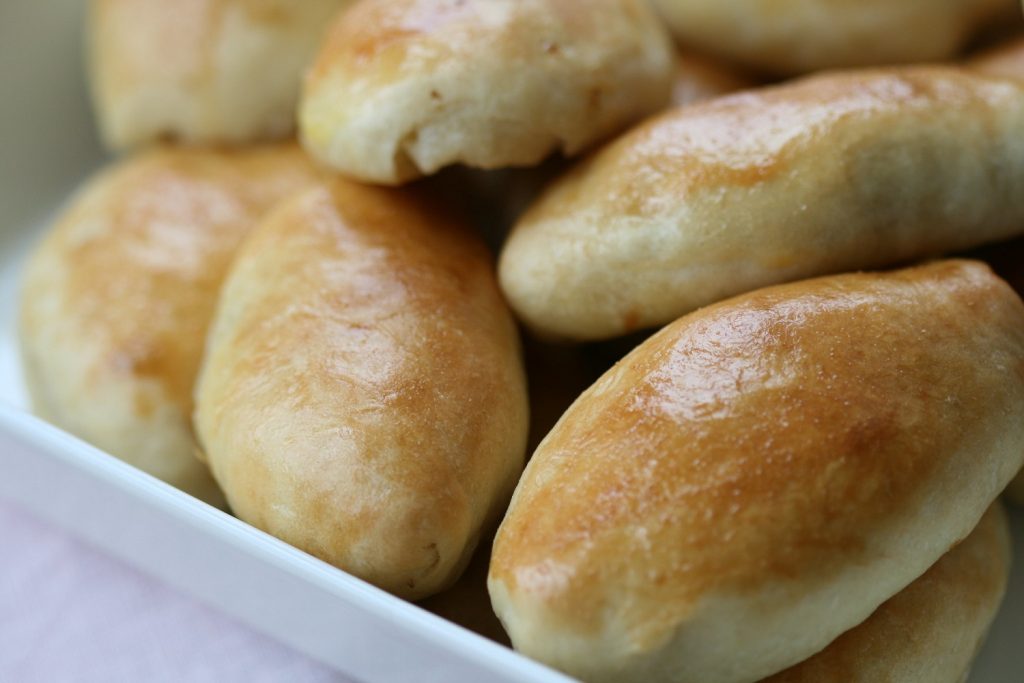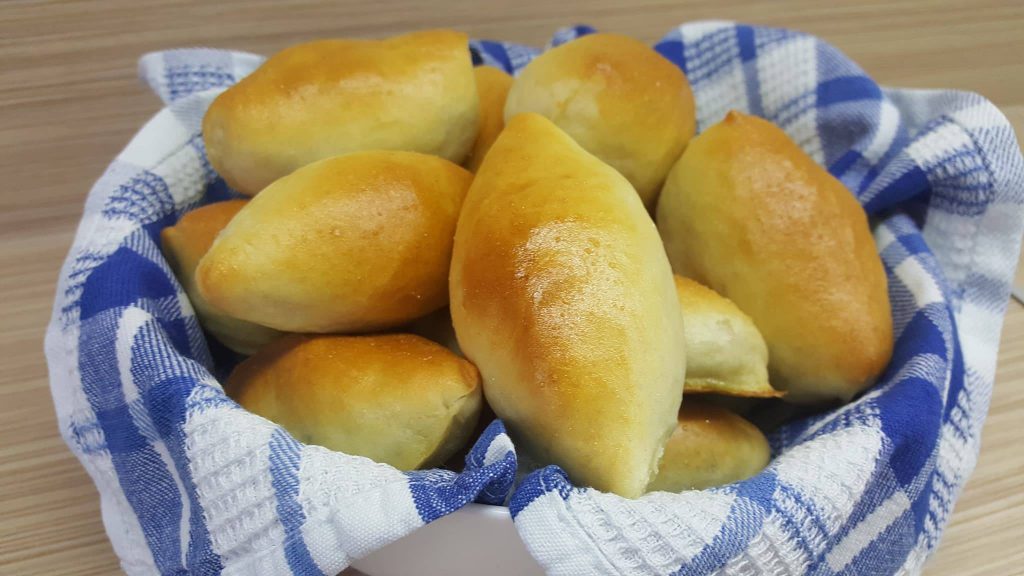It seems every culture has their own version of the dumpling, but, in a hypothetical bracketed dumpling tournament, the Estonian pirukas would come out on top, Andres Simonson from the US writes.
The pirukas is Estonia’s savory gift to the fattening world of turnovers, or if you prefer, dumplings. Although there are many varieties, at its core, the pirukas is a stuffed sweet bread or pastry dough filled with Estonian ethnic delight. Pick your favourite filling, whether stewed beef, carrots, ham, cabbage or other available rural peasant food, and prepare for culinary bliss.
Dumpling geography
Of course, this form of hand-held delicacy is not unique to Estonian cuisine. Many cultures have their version, all of which are portable, poppable and, if you don’t want to marry just one, polygamous. These include:
- Empanada. The Spanish and Central/South American version of the turnover. Savoury and definitely spicier than those found in Tallinn. But for those who don’t know Estonian fare, the only cuisine less spicy is jarred baby food.
- Pierogi. The Slavic dumpling probably most closely associated with Poland. Rather boring when boiled but intoxicating when sautéed with a generous hunk of butter, diced onions and bacon bits (note: if you prefer literal sentences over figurative, serve with a generous pour of good vodka to truly make them intoxicating).
- Calzone. Italian turnover bliss – golden baked pizza dough bread stuffed with gooey melted cheese. Serve with a nice marinara tomato sauce and plenty of napkins.
- Jamaican patty. Flaky golden yellow shell, spicy innards, Caribbean flair. Possibly the topic of the Bob Marley song, “One Love”?
- Knish. Developed in Jewish communities in Central Europe, later perfected in New York City. And, like many Yiddish words, fun to say. Oy vey!
- Samosa. The triangular entry in the dumpling lexicon. Filled from corner to corner to corner with… well, I’m not exactly sure. But I do know that at a cocktail party they will disappear faster than breath mints at a halitosis convention.
- Spanakopita. The clear favourite of grecophiles and Popeye (an American cartoon character, originating from 1929 – editor), this phyllo dough entry is stuffed with spinach and feta. OK, well, given the amount of butter and cheese, Popeye likely would not have been as buff if these were his sole source of spinach.
- Wonton. An indispensable addition to any my-date-cancelled-on-me Chinese food takeout night. Wontons are typically stuffed with pork, or maybe shrimp, and can be ordered in soup, wok fried or (yawn) boiled.
All of the above are delicious and hold an important Tasty Council position in the United Nations of Turnovers. But in my book, none are better than stewed beef and dill pirukad in a baked and cardamom-laced yeast dough.
The geometry of the pirukas
They can’t be too big, otherwise the filling to shell ratio falters. If you’ll recall your geometry, the volume of an object increases by the cube as the surface area increases by the square. In other words, as an object grows in size, the ratio of its surface area to its volume decreases. Therefore, at some breaking point, the pirukas just becomes an aberration – a sad freakish monstrosity that falls apart unto itself. In fact, Euclid (an ancient Greek mathematician, often referred to as the “founder of geometry” – editor) predicted this in his seminal work, “The Elements of Pirukad”.

The grammar of the pirukas
Moving from geometry to grammar, pirukas is the singular, while pirukad is the plural. Like the countless other idiosyncrasies of the Estonian language, this may puzzle English speakers. But not to worry, there’s no way you’ll be ordering just one pirukas – so we can disregard the term.
The pirukas industry
The problem for fans of pirukad is, outside of Estonia (except for maybe within Estonian diaspora gathering places), you are not going to find them in the supermarket aisles or on the appetiser menu at your favourite restaurant. McDonald’s has not quite latched onto the concept. And that’s truly a shame, because home kitchen preparation and assembly of pirukad is a tedious process.
First, you have to prepare your dough, allowing it time to rise if using a yeast dough. This requires a lot of kneading (or, with apologies to my grandmother, an electric stand mixer with dough hook –gasp!).
Second, you have to prepare your filling and that requires lots of chopping (or, with apologies to my other grandmother, a food processor – double gasp!).
Third, you have to assemble the pirukad. This requires rolling the dough relatively thin and cutting circles with a glass. A beer glass works best, preferably filled with a hearty ale to quench one’s thirst during this tiresome process. To avoid spilled beer, use a second empty glass to actually cut the dough circles. In diplomacy, this is known as the two-glass solution.
To continue the assembly, place a heaping tablespoon of filling on the dough disk. If you are doing things correctly, it should look like a plop of mashed potatoes centred on a plate. If you are not doing things correctly, consult your grandmother.

Now, moving on (and in better spirits if subscribe to the two-glass solution), take half of the dough circle and fold it over the filling to meet the other semicircle. Crimp the edges shut to avoid your pirukas opening like a clam during the baking process (if this happens, true to nature, an Estonian won’t complain and will still eat them… but if the light is just right, you may notice a slight, barely discernible disapproving look). For a golden sheen, baste the dumpling-to-be in egg wash.
With assembly complete, line up your pirukad on a lightly greased baking sheet and transfer them into a preheated oven. With the first batch, prepare for the longest 20 minutes of your life.
Because during this time, the aromas will permeate every room in the house. The dog will lift its head and begin salivating. The kids will detach their retinas from the nearest screen. If your windows are open, the neighbours may decide to forgive your past transgressions and stop over (that incident with the lukewarm sauna last month, no big deal!). In other words, while the delectable aromas waft outward, hungry carbon-based lifeforms will march inward. And to think, the silly Pied Piper (according to a legend, dating back to the Middle Ages, Pied Piper was a rat-catcher hired by the town of Hamelin in Germany to lure rats away with his magic pipe; when the citizens refused to pay for this service, he retaliated by using his instrument’s magical power on their children, leading them away as he had the rats – editor) used music to lure his victims – amateur.
The rest of the process is easy – horde as many as you can before the bowl is emptied by others.
The pirukas philosophy
But what is the deeper meaning of the pirukas? If you are one fond of searching for allegory, I suppose we can find one in the pirukas. How can we open our minds and see beyond the culinary? Is the pirukas more than just sustenance?
It could be that the filling is “eestlus” (“Estonianness” – editor) and the dough, the wrapper if you will, is the reason you find this article interesting. In other words, publications like this help hold us together. You, well, you are chopped ham.
It could be that the half-moon shape reflects our generally mellow and unexcitable nature. Not full moon crazy, but not new moon unapparent either.
It could be that the variety of available fillings are symbolic of our inner differences, yet, we are all held together by a common shell. For example, one can still be Estonian, and not have a fondness for accordion laden folk music. Oh wait, maybe we are all the same throughout. Scratch this last desperate search for pirukas philosophy.
Or, with all apologies to the empanada, it could just be that the pirukas is the best dumpling in the world. End of story.
Cover: Pirukad (photo by Kaare Sova/Nami-Nami).

